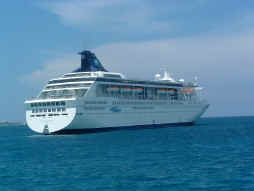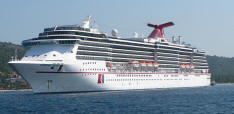Cruises R Fun! - Reviews of Cruise Lines, Cruise Ships, Destinations, Ports And More!
![]()






Princess Star Cruise To Alaska, A Visit To Ketchikan
 |
 |
 |
 |
 |
 |
 |
 |
 |
 |
 |
 |
 |
 |
 |
 |
 |
 |
 |
 |
 |
 |
 |
 |
 |
 |
 |
 |
 |
 |
 |
 |
 |
 |
 |
 |
 |
 |
 |
 |
 |
 |
 |
 |
 |
 |
 |
 |
 |
 |
 |
 |
 |
 |
 |
 |
 |
 |
 |
 |
 |
 |
||
History of Ketchikan
The Tlingit people originally settled this area as a summer fishing camp, where five different species of salmon spawned every year. The Natives called it “Kitchsk-hin” sounding much like another Tlingit word which translates to mean “spread Wings of a Prostrate Eagle’,” and this is often sited as the origin of the word Ketchikan. Another version says the real name was Kas’kan or ‘land belonging to Kats’, and early Tlingit chief. Ketchikan is still home to an abundance of fish and timber, which attracts the incredible wildlife this port is known for. Well known as the salmon capital of the world this town is seen by both naturalists and sports fishers as an absolute paradise.
The first salmon saltery was established in the area in 1883 by a businessman from Portland Oregon. A couple of years later he hired an associate by the name of Mike Martin to survey the land and investigate the possibility of establishing a salmon cannery along Ketchikan Creek’s bank. In 1885 Martin purchases 160 acres from a native chief; land that later became the township. He opened the area’s first cannery in 1886 near the creek’s mouth, and the town quickly began to develop around it. Shortly thereafter, a post office was established in 1892. And by the late 19th century, the discovery of gold and copper created a need for a mining supply center. Gold was discovered in the nearby hills and on Prince of Wales Island, and copper was discovered a short time later. Ketchikan quickly became the supply center of all the mines in the surrounding area.
By 1900 the town with its population of roughly eight hundred, received its official incorporation. The fish trade in the area flourished and with a busy mining industry, Ketchikan became an important trading community. By 1912 canneries were producing fifteen million cases of salmon per year. By the mid-1930’s, Ketchikan had aptly named itself” The Salmon Capital of the World” and salmon remains one of the most popular purchases for cruise ship guests to commemorate their visit to Ketchikan.
Ketchikan is also world-famous for the abundance of incredible totem poles in the region. The collection here includes the Chief Johnson totem pole, a replica which stands 55-57 feet tall (55 referring to the actual log).
Ketchikan is currently shifting its focus to tourism. Sitting along a steep hillside, sections of the town are built on wooden pilings, completely over water. Home to almost 14,000 residents, the island is 35 miles wide. It is named ‘The Gateway City” because it is the first port-of-call northbound into Alaska heading north along the famed Inside Passage.
On The American Queen
On The Crown Odyssey
On The Millennium
On the Millennium More Millennium Our Itinerary Athens Greece Capri Italy The Ship Cyprus Greece Pictures of Italy Kusadasi Nice/Monaco Vatican City and Museum Cruise Food Ancient Egypt Egyptian Pyramids More Pyramids More Egypt Pictures Ancient Pompeii More Pompeii Ancient Rome The Coliseum Grand Buffet
On The Oosterdam
The Norwegian Sea
The Sapphire Princess
The Sapphire Princess
Ground Zero Vladivostok, Russia Pusan, South Korea The Tongdosa Temple Shanghai, China Dalian, China Travel To Beijing Beijing, China More Beijing The Pearl Market The Great Wall
of China A Cloisonné Factory The Forbidden City Tiananmen Square People Pictures People Pictures 2 Cruise Ship Food
Pictures Cruise Ship Pictures More Cruise Pictures Shopping in Beijing China
The Caribbean Princess
The HAL Oosterdam
The Carnival Spirit
Star Princess
Carnival Dream